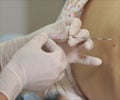A new study reveals that researchers may soon be able to utilize new “remote presence” technologies to perform brain and spinal cord stimulation therapies.

The preliminary study by Dr. Ivar Mendez of Queen Elizabeth II Health Sciences Centre in Halifax, Nova Scotia, Canada, supports the feasibility and safety of using a remote presence robot—called the "RP-7"—to increase access to specialists qualified to program the brain and spine stimulators used in neuromodulation.
Robot Lets Experts Guide Nurses in Programming Stimulators Dr. Mendez and his group developed the RP-7 as a way of allowing experts to "telementor" nonexpert nurses in programming stimulator devices. Already widely used for Parkinson's disease and severe chronic pain, neuromodulation is being explored for use in other conditions, such as epilepsy, severe depression, and obsessive-compulsive disorder.
In this form of therapy, a small electrode is surgically placed in a precise location in the brain or spine. A mild electrical current is delivered to stimulate that area, with the goal of interrupting abnormal activity. As more patients undergo brain and spine stimulation therapy, there's a growing demand for experts to program the stimulators that generate the electrical current.
The RP-7 is a mobile, battery-powered robot that can be controlled using a laptop computer. It is equipped with digital cameras and microphones, allowing the expert, nurse, and patient to communicate. The robot's "head" consists of a flat-screen monitor that displays the face of the expert operator.
The RP-7 also has an "arm" equipped with a touch-screen programmer, which the nurse can use to program the stimulator. The expert can "telestrate" to indicate to the nurse the correct buttons to push on the programming device.
Advertisement
On analysis of 20 patients (10 in each group), there was no significant difference in the accuracy or clinical outcomes of remote-presence versus conventional programming. No adverse events occurred with either type of session.
Advertisement
"This study demonstrated that remote presence can be used for point-of-care programming of neuromodulation devices," Dr. Mendez and coauthors write. The study provides "proof of principle" that the RP-7 or similar devices can help to meet the need for experts needed to serve the rapidly expanding number of patients with neuromodulation therapies.
The researchers have also started a pilot study using a new mobile device, called the RP-Xpress. About the size of a small suitcase, the RP-Xpress is being used to perform long-distance home visits for patients living hundreds of miles away, using existing local cell phone networks. Dr. Mendez and colleagues conclude, "We envision a time, in the near future, when patients with implanted neuromodulation devices will have real-time access to an expert clinician from the comfort of their own home."
Source-Eurekalert













